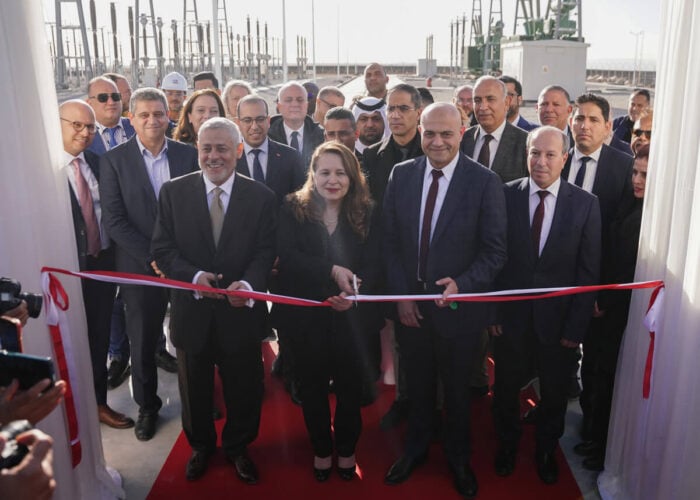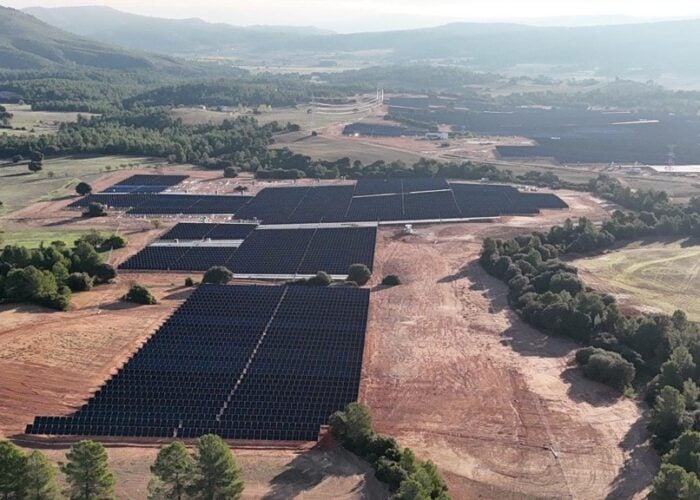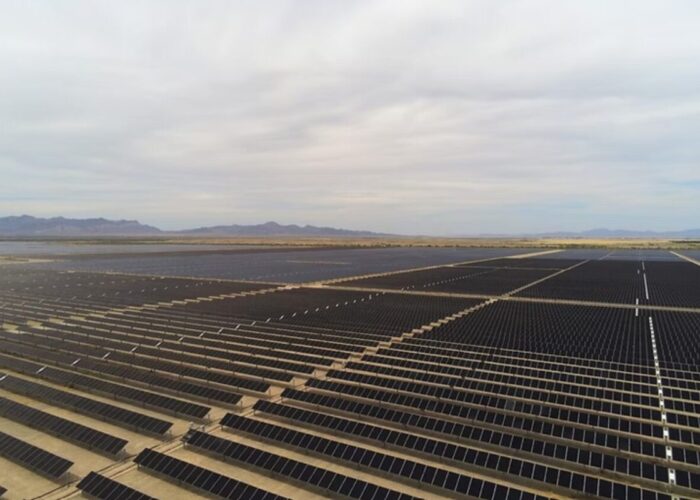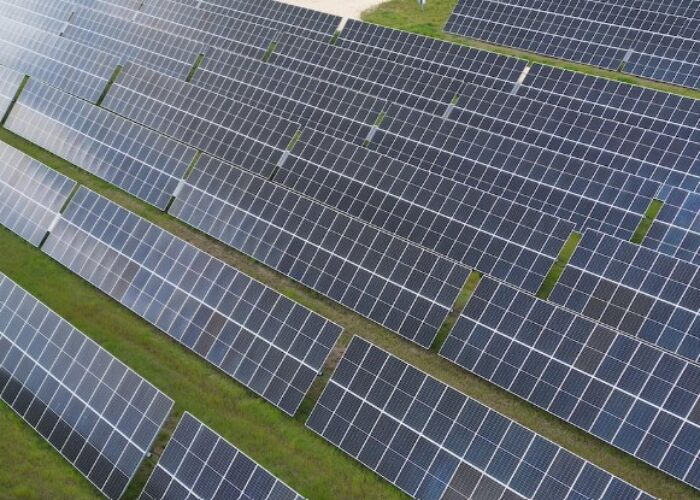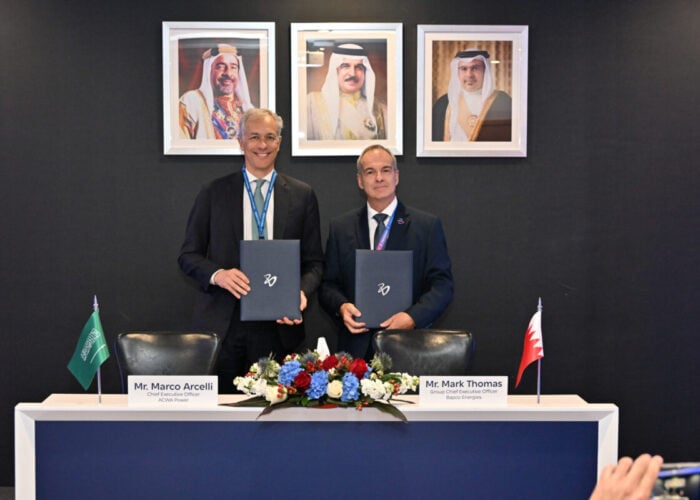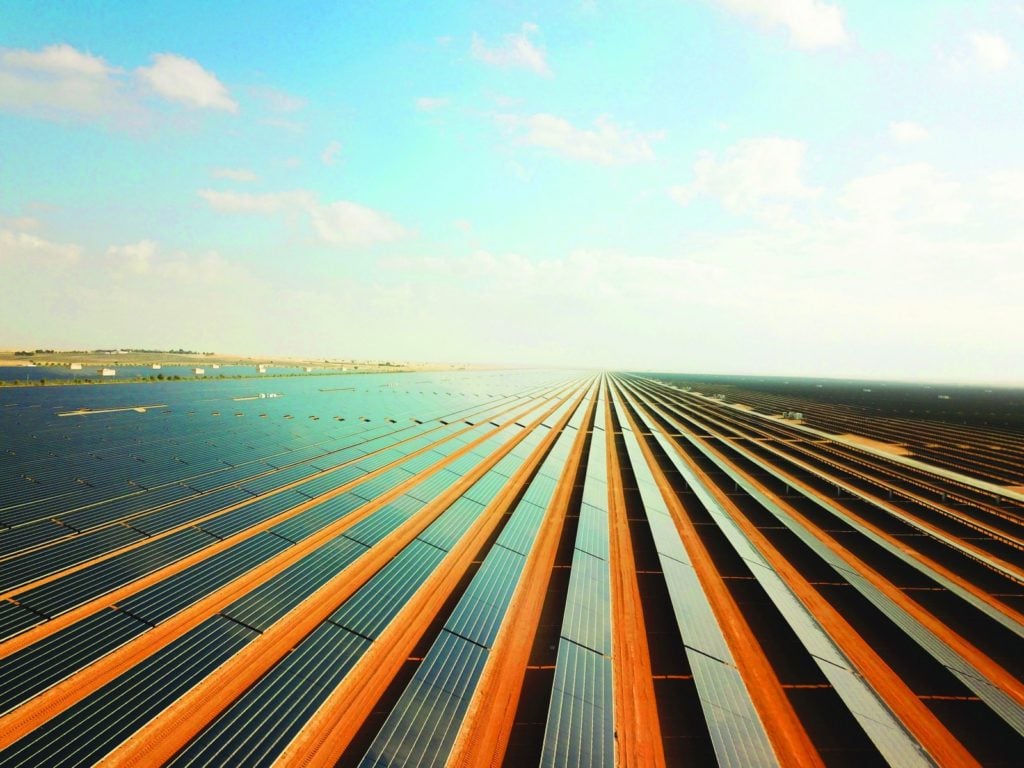
Countries in the Middle East and North Africa have plans to increase utility-scale solar capacity by 49.5GW by 2030, according to Global Energy Monitor (GEM).
With more than 30GW of projects announced as in development or in construction between Oman, Morocco and Kuwait, those jurisdictions will lead utility-scale solar PV in the region this decade.
Try Premium for just $1
- Full premium access for the first month at only $1
- Converts to an annual rate after 30 days unless cancelled
- Cancel anytime during the trial period
Premium Benefits
- Expert industry analysis and interviews
- Digital access to PV Tech Power journal
- Exclusive event discounts
Or get the full Premium subscription right away
Or continue reading this article for free
All solar and wind announced projects would increase by more than five-fold MENA’s current renewables capacity, with utility-scale solar installed capacity currently sitting at 7.4GW.
Moreover, a 12.5GW solar PV project has been planned in Oman that could be operational by 2038.
Currently the countries with the most utility-scale solar and wind installed are Egypt (3.5GW), United Arab Emirates (2.6GW) and Morocco (1.9GW), the latter set to be the only one to stay at the forefront of renewables.
Including wind projects, the region plans to add 73GW of utility-scale renewables capacity this decade, covering 91% of the Arab League’s renewable energy target of 80GW by 2030, according to GEM’s data.
Many of those countries will be shifting away from fossil-powered projects to renewables this decade. Morocco’s rollout of renewables in the next five years will be six times higher than gas investments and Oman has less than 400MW of fossil-powered projects in the pipeline and almost 20% of its renewable’s will be operational in the next two years.
Nine of the sixteen countries with a pipeline of utility-scale solar projects by 2030 had less than 60MW of solar PV cumulatively between them, with many about to add their first solar PV plants as shown in the chart below. Only three countries – Jordan, Egypt and the United Arab Emirates – currently have more than 1GW of operational capacity.
Furthermore, the average size of utility-scale solar projects in the MENA region is four times bigger than the rest of the world, the reasons for which are twofold according to GEM. Firstly, the region’s high demand on energy storage which it aims to capitalise on, and secondly is the possibility to become transcontinental renewable energy exporters.
Morocco is among the countries to focus heavily on exporting generation, as it aims to add more than 14GW of solar PV and 1.3GW of wind by 2027. Almost all of that figure – 12GW – is to be exported, as is the case for the 10.5GW Xlinks solar-plus-wind project that would export 3.6GW to the UK.
Kasandra O’Malia, project manager for the Global Solar Power Tracker at GEM, said: “The Middle East and North Africa have always had tremendous potential for wind and solar development, but to see these countries shunning fossil gas in favour of renewables and at this scale is stunning.”
Several large-scale green hydrogen projects have also been announced in the region – Saudi Arabia, Oman, Egypt and Morocco among others – with many instances aimed at exporting the production of either green hydrogen or green ammonia.

